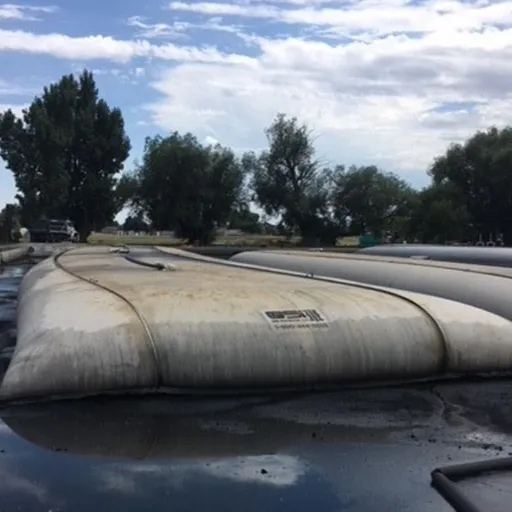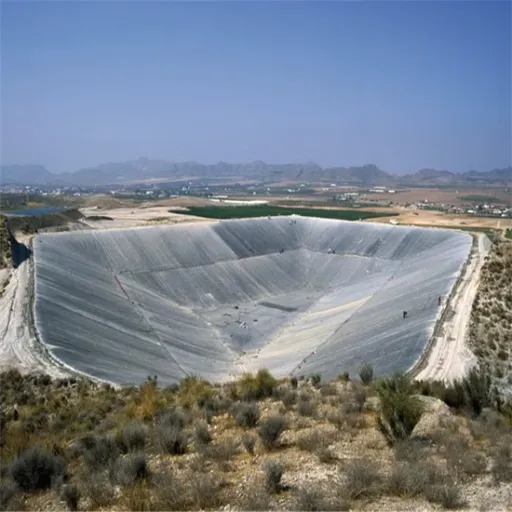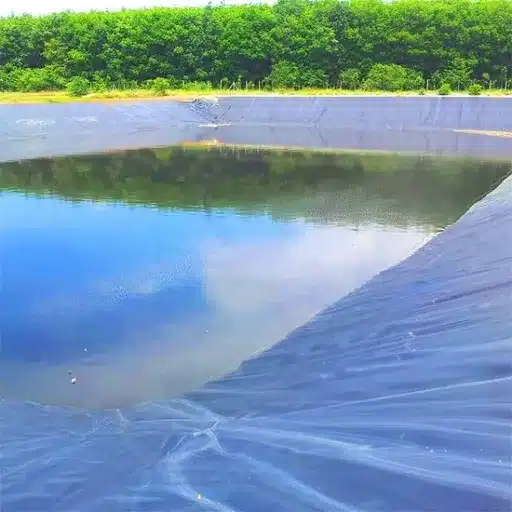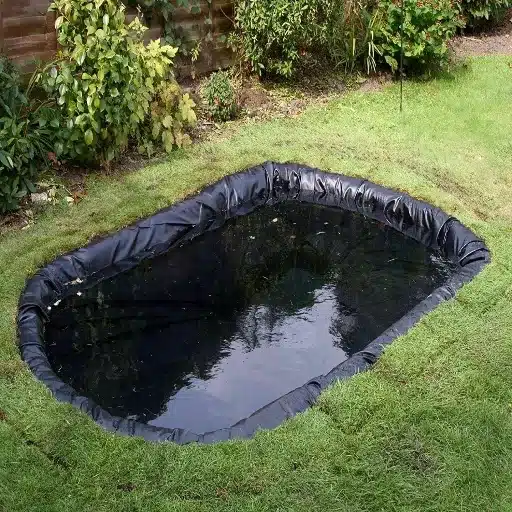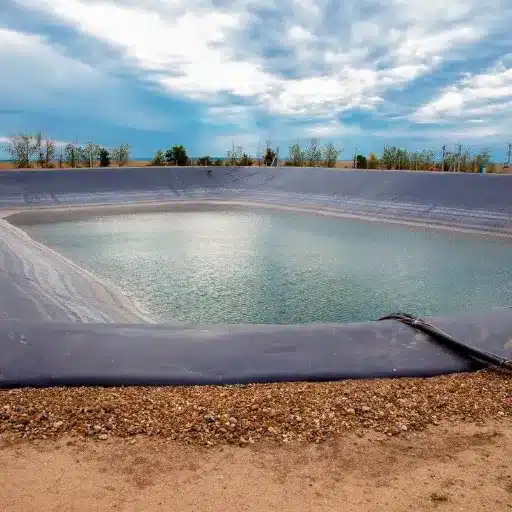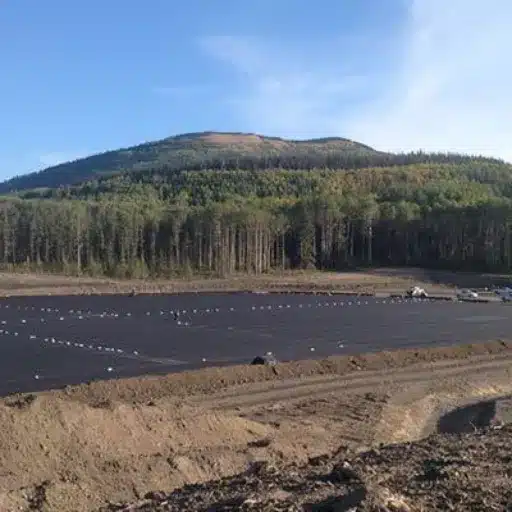One of the considerable innovations in erosion-control engineering and other environmental technologies is the use of geotextile tubes. From combating coastal erosion, the shifting of sediments, and providing containment systems that remain strong and resilient, these engineering marvels have been inculcated as part of the sustainable coastal and inland management processes that they have really revolutionized. This article focuses on the multifarious applications of geotextile tubes, their technical specifications, and how they stand as a competent barrier against erosion. If you are a civil engineer, environment planner, or any stakeholder interested in infrastructure development, then knowing about what geotextile tubes can do and their uses would come a long way in finding suitable and environmentally friendly solutions to the challenges faced in the field today.
Definition and Importance of Geotextile Tubes
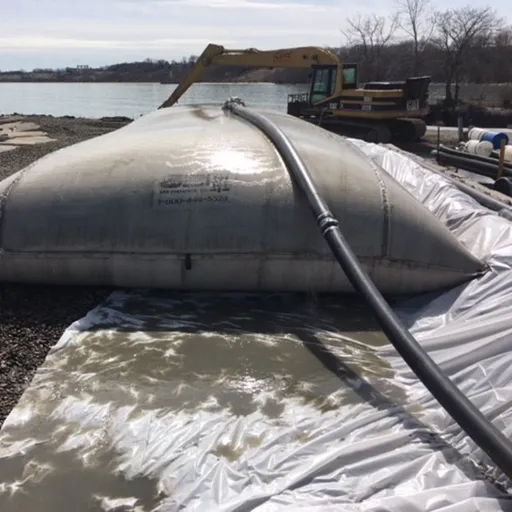
Geotextile tubes are large, permeable fabric structures made from high-strength geotextiles designed to accomplish the main functions of erosion control, sediment containment, and shoreline stabilization. These tubes are usually made of woven or nonwoven polypropylene or polyester, filled with a slurry mixture of dredged materials, sand, or other sediment substances being pumped directly into the tubes from a pumping system, and left there to dewater with time. This dewatering causes the solid particles in the tube to compact firmly while water escapes through the permeable fabric, thus forming strong, stable structures that can be well-positioned for use under many conditions.
Key Statistics
- Coastal Retreat Rate: Average of 0.5 meters per year worldwide
- Wave Reduction: Up to 70% reduction in shoreline recession
- Manila Bay Case Study: Demonstrated significant benefits in severe weather conditions
In addressing the increasing problems of coastal erosion and sediment loss, the relevance of geotextile tubes relates to their versatility and environmentally-Compatible features. For instance, recent studies indicate coastlines all over the world are retreating by an average of 0.5 meters a year due to factors induced by climate change: rising sea levels and increased intensity of storms, as an example. Geotextile tubes provide an effective, low-cost, and environmentally friendly measure by preventing shorelines from undergoing further erosion, and controlled deposition of sediments helps restore degraded areas.
On the drop, these tubes are utilized for building breakwaters, dikes, and levees in several marine and hydraulic engineering projects. Geotextile tube technology was also demonstrated to reduce waves and abate shoreline recession by as much as 70% in a case study of Manila Bay, which showcased the benefits of this technology in an area increasingly affected by severe weather events and coastal degeneration. Given their modularity, ease of installation, and durability from a long-term perspective, geotextile tubes provide a cheaper alternative to local ecosystems and are vital in sustaining both artificial and natural ecosystems.
Overview of Erosion Control
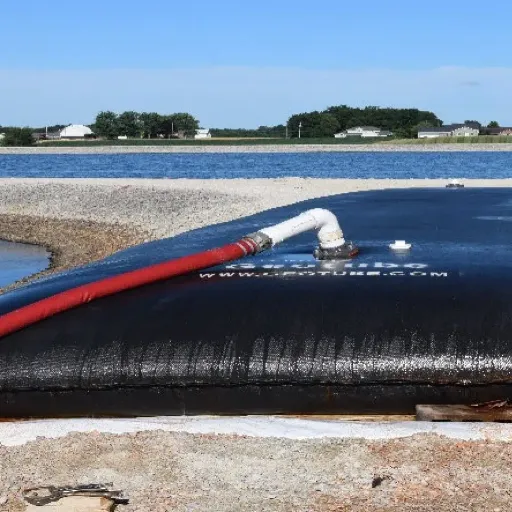
Erosion control addresses a broad array of processes designed to prevent and mitigate the displacement of soil, sediment, and other materials by natural forces such as water, wind, and ice. Erosion control is essentially necessary for preserving soil condition, protecting infrastructure, and safeguarding local environments. Soil erosion rates have dramatically increased due to deforestation, intensified agricultural activity, and urban development, with estimates for global-North-West erosion reaching around 24 billion tons of fertile soil lost annually.
Erosion Control Methods & Effectiveness
- Vegetative Covers: Up to 80% erosion reduction under favorable conditions
- Geosynthetics: 25% increase in retaining structure service life
- Mississippi River Basin: 50% reduction in sediment runoff over five years
Some of the most effective solutions today are physical measures, vegetative methods, and advanced geosynthetics. For example, vegetative covers such as live plants and turf reduce surface runoff by enhancing water infiltration and bonding soil particles through root networks. It has been estimated that vegetative measures could reduce erosion rates by up to 80% under favorable conditions. In addition to these measures, geosynthetics, such as geotextiles and geogrids, are increasingly being used in both urban and rural projects to stabilize slopes and improve soil cohesion. Data released recently indicate that using geosynthetics can increase by at least 25% the service life of retaining structures, thus constituting a good investment for the long term.
Besides that, large-scale infrastructure projects have increasingly invested in modular erosion control measures, including gabions and silt fences, for shorelining, fortification of riverbanks, and slope stabilization. In the Mississippi River Basin, case studies indicated that these measures managed to reduce sediment runoff by about 50% over five years. This technical innovation points to the critical need for an integrated approach to erosion control that combines vegetative, structural, and synthetic solutions to effectively fight against the harmful effects of erosion.
Different Industries and Applications
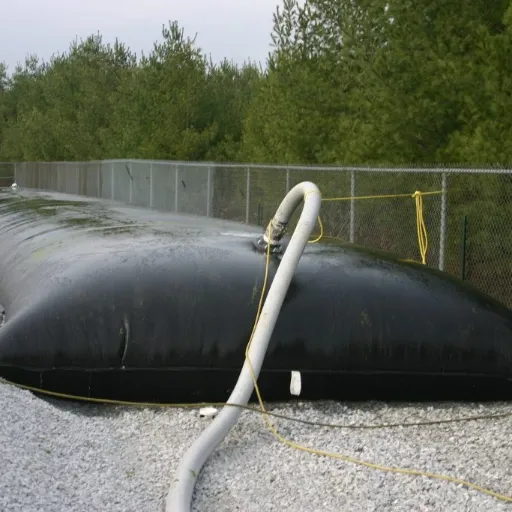
I consider geotextile tubes crucial in dewatering because of industrial efficiency and environmental benefits. They are employed for separating water from solids and thus are ideal for use in dredging, wastewater treatment, and industrial sludge applications. They offer large-scale material handling at lesser costs to the environment.
Geotextile Tubes for Coastal Erosion
Geotextile tubes have increasingly emerged as a final solution against erosion in coastal environments. These huge tubes, made from permeable geotextile fabrics, are designed to stabilize the shoreline, reduce wave energy, and retain sediment. Acting as breakwaters on one hand and containment systems on the other, geotextile tubes hence provide a great double benefit of protecting the coastal area against the effects of erosion and assisting in land reclamation.
Coastal Protection Benefits
- Erosion Reduction: 65% reduction over 18-month monitoring period (Southern Asia project)
- Cost Savings: 35% reduction in capital expenditures vs. conventional solutions
- Environmental Impact: Minimal disruption to marine ecosystems
- Habitat Conservation: Preserves natural coastal habitats
Recent research and field work undergird their efficiency across variable coastal conditions. For example, along shorelines, geotextile tubes are used to absorb the energy of incident waves, thereby reducing wave run-up and beach and dune erosion. In southern Asia, a coastal protection project along a 1.5-mile shoreline utilizing geotextile tubes was found, according to research, to reduce erosion by 65% within an 18-month monitoring period.
These systems are also the more economically viable and eco-friendly options when compared to conventional solutions like concrete sea walls or constructing rock revetments. As per an environmental engineering review from the year 2021, geotextile tube installations can reduce capital expenditures by as much as 35% while conserving natural coastal habitats. Apart from capital savings, the installation process creates very little disruption to marine ecosystems, which is an essential consideration for areas of such ecological and economic value as fishery or bird nesting grounds.
Dewatering Tube Applications for Wastewater Management
Dewatering tubes are also commonly called geotextile tubes. They have now become an indispensable method in wastewater management for the dewatering and containment of sludge. Such are the descent textile structures of a porous nature made up of synthetic fabrics built specially to hold solid matter while permitting water to flow through them in the dewatering process. This has its advantages as industries and municipalities use these tubes to minimize sludge volume, reduce disposal costs, and enhance operational efficiency.
Wastewater Management Performance
- Water Content Reduction: 70-85% depending on polymer dosing and tube design
- Filtration Efficiency: Higher than 90% for particulate matter capture
- Flow Rate: Up to 10 gallons per square foot per second (modern tubes)
- Market Growth: 8% CAGR in geo-synthetics sector
Among the key applications are those municipal wastewater treatment plants in which sludge is an unpleasant product of primary and secondary treatment processes. Dewatering tubes may reduce the water content of sludge by approximately 70-85%, depending on polymer dosing and design of the tube, thus greatly reducing the amount and weight of waste that needs disposal. These systems also guarantee an efficiency of filtration higher than 90%, and this means that the major part of all particulate matter and contaminants are externally captured within the tubes.
The more recent developments in geotextile have contributed to the enhancement of their efficiency. The utilization of enhanced UV resistance and tensile strength were aimed at prolonging the life cycle of dewatering tubes, while increasing fabric permeability served to shorten the cycles of dewatering. Some modern and newly improved geotextile tubes, in particular, may even reach a flow rate of 10 gallons per square foot per second and process quickly even with the largest operation.
Technical Specifications and Innovations
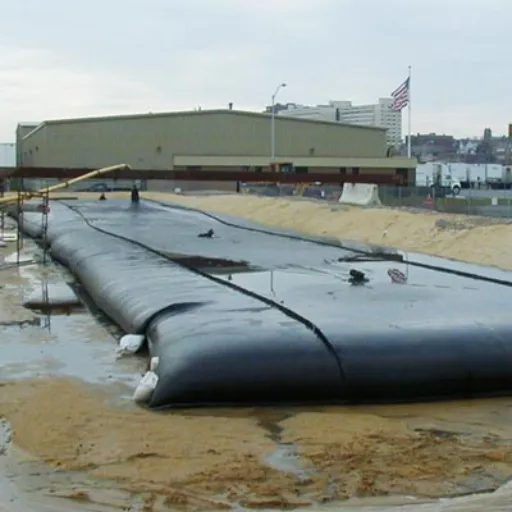
High Strength Materials for Durability
The use of high-strength materials in the geotextile industry has been one of the important developments to guarantee the durability and efficiency of any infrastructure in different environments and industries. Polypropylene (PP) and polyester (PET) are commonly used materials because they provide high tensile strength and resist degradation by chemicals and biological agents. Modern-day geotextile fabrics, both woven and nonwoven, can be engineered to exceed tensile strengths of 1000 kN/m, making them suitable for applications requiring long-term stability under extreme loads, while their use is in retaining walls, erosion control, landfill covers, and so forth.
Material Performance Specifications
- Tensile Strength: Exceeds 1000 kN/m for modern geotextile fabrics
- Filtration Efficiency: 99% for certain particle sizes in UV-resistant fabrics
- Chemical Resistance: High resistance to degradation by chemicals and biological agents
- Puncture Resistance: Enhanced through reinforced composite geotextiles
Some recent data present the effectiveness of these materials under unfavorable environmental conditions. For instance, dewatering tubes made from UV-resistant high-strength fabrics have, in fact, shown the highest efficiency in sludge dewatering operations, with filtration reaching 99% for certain particle sizes. Reinforced composite geotextiles further improve resistance to punctures and tears, thus extending the service life of the product under aggressive stressors.
Market insight in favor of adopting such materials, with growth in demand forecast to be sustained particularly in fast infrastructure-developing regions. High-strength geotextiles are enabling reduced maintenance costs and therefore are sustaining construction and waste management projects by preventing degradation of materials and subsequent replacements. Being such a fundamental material in earth and environmental engineering, increasingly, their relevance will grow in addressing some of the global challenges with more robust and efficient solutions.
Recent Innovations in Geotextile Tube Design
Geotextile tube design has undergone a level of transformation that engineers have attributed to enhancements in functionalities and efficient to durability in coastal protection and dewatering applications. The latest innovations make use of state-of-the-art materials and design technologies to bolster performance under extreme conditions. The development of high tensile strength polypropylene and polyester fabrics has, for example, increased resistance to punctures and abrasion, thereby enhancing product life while diminishing maintenance requirements.
Innovation Highlights
- Sediment Retention: 50% better efficiency with multilayered composite textiles
- Hydraulic Efficiency: 20% improvement through CFD modeling
- Production Quality: 35% decrease in flaws with laser-guided cutting
- Erosion Reduction: 35% decrease in shoreline erosion rates
Multilayered composite textiles representing an emerging trend combine composites of dissimilar materials to provide both filtration accuracy and structural durability. For dewatering projects, improved seam strength and optimized pore sizes currently enable sediment retention efficiency that is at least 50% better in terms of minimizing material losses. Additionally, computational fluid dynamics (CFD) modeling has gradually become popular in the design stages for actual simulations of hydraulic fluid interactions prior to implementation, thereby enabling a hydraulic efficiency improvement of around 20%.
On the other hand, manufacturing technology innovations such as laser-guided cutting and automated stitching systems have decreased flaws in production, thereby increasing reliability in field applications. Recent data suggest a 35% decrease in erosion rates in shoreline stabilization projects using said tubes relative to traditional techniques, perpetually validating the geotextile tubes as a leading technology in addressing shoreline degradation.
Case Studies and Real-World Examples
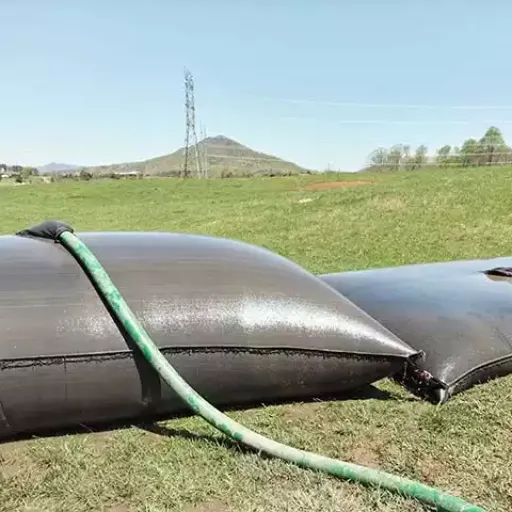
Dewatering Success Stories for Industrial Applications
These dewatering technologies have found great value in various industrial sectors to enhance operations, reduce wastage, and lessen environmental impact. A measuring rod for success comes from the mining sector, where tailings management employs advanced dewatering methods widely; tailings are basically a concoction of water, chemicals, and fine-grained mineral waste. The 2021 report by the International Council on Mining and Metals stated that the new dewatering technologies, such as high-pressure filtration and vacuum filtration, reduced water usage from tailing ponds by as much as 40%, and the water itself finds good reuse in various mining processes.
Mining Sector
Water Usage Reduction: 40% decrease in tailing pond water usage
Benefit: Water reuse in various mining processes
Municipal Sector
Sludge Volume Reduction: 60% reduction in disposal volume
Cost Savings: €2.5 million annually (Amsterdam case)
Pulp & Paper Industry
Solid Dryness: Over 50% increase in discharged solids
Cost Reduction: 25% cut in total operational costs
In the same way, dewatering has been an important ingredient in the municipal sector toward wastewater treatment plants. For instance, some centrifuge sludge dewatering systems increase operating efficiency by volume reduction of sludge to be disposed of by up to 60%. According to a study conducted in Amsterdam and cited by the European Environment Agency in 2022, such systems are able to save the city nearly €2.5 million yearly in transportation and disposal costs.
Moreover, pulp and paper industries have adopted dewatering techniques for waste fiber and residual sludge management. Thanks to screw press systems, manufacturers increased the dryness of discharged solids to over 50%, which led to marked reductions in energy consumption during the thermal drying stages and cut the total operational costs by about 25%.
These are a few of the examples that show how customized dewatering solutions are helping solve problems of waste management while preserving resources and excelling in operations across industries. With advancements in technology and new forms of automation coming into play, these techniques are looking to be far more efficient and sustainable in the years to come.
Impact of Geotextile Tubes on Shoreline Stability
Geotextile tube measures form very vital solutions for shoreline protection and erosion control provided by solid engineering and versatility. These large, durable textile containers are filled with sand, dredged material, or other substances so that a tough barrier may be created to separate the coastline from the obstruction of wave energy, tidal movements, and sediment displacement. Reduction of shoreline recession may range 60%-80% in comparison with unprotected areas, according to the research performed on geotextile tube installations.
Shoreline Protection Results
- Shoreline Recession: 60%-80% reduction compared to unprotected areas
- Gulf Coast Study: 50% annual reduction in sediment loss
- Environmental Benefits: Natural sediment deposition and dune restoration
- Climate Adaptation: Effective against sea-level rise and storm intensification
One key benefit of geotextile tubes is that they are suitable for use in a variety of coastal scenarios, including beaches, river banks, and estuaries. For example, example studies in the Gulf Coast of the United States showed that geotextile tubes reduced sediment loss by as much as 50% annually: thus giving short- and long-term improvements to shoreline stability. Moreover, being somewhat environmentally friendly, geotextile tubes naturally cause sediments to lay out on the landward side of the tube, assisting dune restoration, and regeneration of native vegetation to further strengthen coastal zones.
Amid rising concerns about sea-level rise and storm intensification, geotextile tube installations are fast becoming a centerpiece of sustainable coastal management strategy. Material improvements, including developments related to UV-stabilized fabrics and better tensile strength, further enhance longevity and performance. In a nutshell, geotextile tubes represent a less expensive, scalable, and eco-friendly alternative for preserving valuable shorelines and cushioning the adverse effects of climate change.
Reference Sources
-
Geoform International: This source explains the applications of geotextile tubes in dredging projects, highlighting their cost-effectiveness and sediment removal capabilities.
-
Earthshield: It discusses the broad applications of geotextile tubes, including river management, coastal protection, soil erosion control, and sewage treatment.
-
IADC Dredging: This feasibility study explores the use of geotextile tubes in hydraulic and coastal engineering, such as shore protection and breakwaters.
Frequently Asked Questions (FAQs)
How do geotextile tubes act toward effective dewatering?
Using geotextile tubes is basically to allow the water to seep through the porous nature of the fabric while solids are retained inside. This filling and dewatering operation is efficient since the tube can support a huge volume of sludge or dredged material, almost removing all solids from the waste, thus reducing the overall bulk of the waste.
Can these tubes be used for shoreline erosion control?
Yes, geotextile tubes are great for shoreline erosion control. They can be arranged in stacks or arranged in such a way as to act against waves and current erosion; this helps to stabilize the shoreline and prevents the continued erosion.
What is custom size used for in geotextile tubes?
The custom sizes in geotextile tubes are meant to provide tailored solutions that fit the specific requirements of a project. Whether used for dewatering bags or for larger ones, the custom size ensures that the filling and dewatering processes of the tubes are carried out with maximum efficiency.
What can be used for filling geotextile tubes?
Materials like dredged materials, sludge, and sediments can be used to fill the geotextile tubes. The arguments for choice in filling materials are used from one act to another; for treating wastewater, it will go one case, for shoreline stabilization it will go another.
How do dewatering tubes fairly compare with traditional dewatering methods?
Dewatering tubes such as the geotextile tubes have greater advantages over traditional methods by affording a greater level of efficiency and cost reduction. They eliminate all forms of mechanical dewatering processes to a huge extent and can manage large volumes of effluent water, thereby cutting down on operational cost.
What advantages do geobags provide in conjunction with geotextile tubes?
Used in conjunction, geobags with geotextile tubes can provide further support for erosion control and sediment retention. Hence, in such areas where shoreline erosion is mostly high, they most effectively sustain the sediment management strategy.

